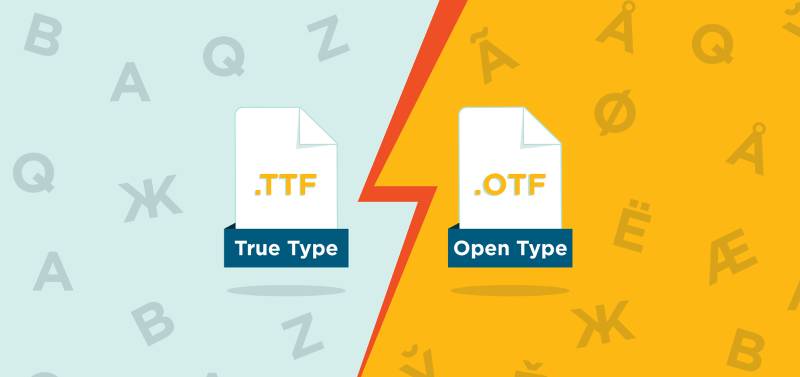What are the differences between TTF, OTF & DFONT font formats?
When working on a Mac or Windows PC platform, you constantly use fonts. Starting with graphic designers, in whose collections there are hundreds, or even thousands of fonts, and ending with ordinary users who deal only with the standard set of fonts of the operating system and applications, they all constantly use them when creating documents, reading materials on the Internet and managing user interface. Understanding how the main font file formats differ will help you use them more widely and take advantage of the full range of typographic headsets.

TTF
TTF files belong to the core Windows TrueType font set. With the latest versions of Mac OS X, this single-platform font format has become common and is now present on both of the world’s dominant operating systems. Apple has slightly modified the TrueType format, preparing it to replace obsolete raster headsets with a more flexible standard and successfully introduced them into the new OS.
The TrueType standard provides for the use of a single file to describe the font, which contains all the necessary information for rendering (rendering) the font on the display screen and when printing it. For comparison with TrueType, let’s say that some obsolete typographic fonts, such as PostScript Type 1 (developed by Adobe Systems), have a much more complex and capacious design for computer processing.
OTF
The OTF standard stands for OpenType typeface and is based on the latest font technology. Like TrueType, OpenType fonts are multi-platform. But, unlike the predecessor, they allow you to put several display styles in one file at once and support a set of characters in different languages.
Moreover, OpenType fonts can use different styles of headsets for the choice of specific applications, changing them depending on the context. This new standard has given designers an excellent opportunity to design fonts that resemble a handwriting style. Depending on the particular OpenType font, it may be based on curve-building algorithms taken from TrueType or PostScript Type 1.
DFONT
The DFONT standard (files with the DFONT extension) is decrypted as the Datafork TrueType font. The format of this file was the standard for Mac OS X system fonts. With the release of Mac OS X 10.6 Snow Leopard, Apple replaced this standard with the TTC or TrueType Collection. The DFONT format is supported exclusively under Mac OS X and is no longer destined to become cross-platform.
Using the AnyConv online converter, you can convert font files from one format to another: for example, otf to ttf or woff to ttf.
Other formats
Old bitmap fonts had significant limitations. So, each of them could use only three sizes (heights) in documents and for this you had to resort to a special font management application. These restrictions were quickly rejected by graphic designers.
Fonts in PostScript Type 1 format eliminate this drawback and scale perfectly when printing, but for this the printer must be compatible with this font standard. Adobe Systems, the developer of this standard, subsequently proposed using the Adobe Type Manager application to remove restrictions on printing.






